ASUS and ASRock Prep Gaming Motherboards for Intel Xeon E3 v5 Processors
by Anton Shilov on December 29, 2015 8:00 AM EST- Posted in
- Motherboards
- Intel
- ASRock
- Xeon
- Asus
- Skylake
- E3
- Intel C232
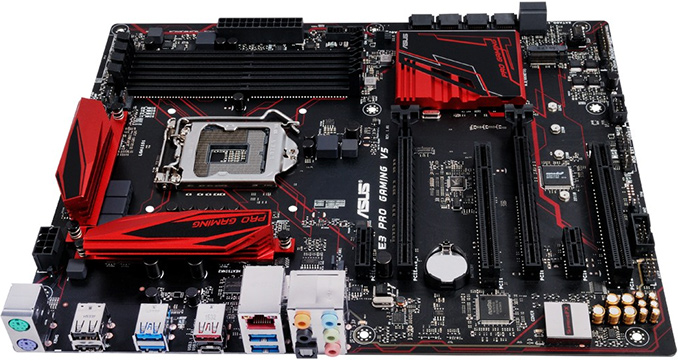
ASUS and ASRock, two major makers of computer motherboards, are rolling out their platforms for Intel Xeon CPUs designed for gamers. While typically Xeon chips are more expensive than comparable Intel Core processors, they feature a number of technologies that make them rather attractive for end-users.
Xeons and Desktops
Intel Core processors for desktops offer performance and feature-set tailored for average users, but server-class Intel Xeon processors for single-socket machines sport such technologies as ECC, vPro as well as Trusted Execution, which may be important for users with custom requirements. Moreover, unlike the $250+ Intel Core i5 6600K, many of the similarly priced quad-core Xeon E3 V5s feature 8MB cache and Hyper-Threading technology, which makes them more comparable to Core i7 in features and should allow slightly higher performance in single-threaded and multi-threaded applications. Intel Core CPUs have their own advantages over Xeon processors, such as unlocked multiplier on select models as well as Intel Identity Protection, but there are still users who prefer to use Xeons.
Back in the day, Intel Xeon CPUs for uniprocessor computers were compatible with higher-end consumer desktop chipsets, whereas Intel Core chips could also work with Xeon chipsets. However, starting from the Skylake generation of microprocessors Intel decided to change its approach to workstation and desktop-class PCs. To that end Xeon E3-1200 v5 microprocessors are incompatible with Intel 100-series chipsets for desktops. For Intel this helps Intel and its partners to better position their products for personal and professional usage, though practically speaking it also serves to draw a much clearer line between the Core and Xeon families, for better or worse.
Even though Intel would prefer to keep its Xeon CPUs away from the consumer market, makers of motherboards plan to give users a choice and are rolling out Intel C232-based platforms with LGA1151 sockets with features for gamers. The Intel C232 is not the most advanced core-logic for the Xeon E3-1200 v5 processors — it only has eight PCI Express 3.0 lanes, up to six USB 3.0 ports, up to six Serial ATA-6Gb/s ports, does not support vPro or Rapid Storage technologies, etc. However, it is also cheaper than the fully-fledged Intel C236 chipset, which is normally used for higher-end workstations.
ASUS Readies Four Xeon Motherboards for Desktop PCs
This week ASUS introduced its E3 Pro Gaming V5 mainboard that supports server-grade Intel Xeon E3-1200 v5 processors as well as a variety of features for desktops PCs used by gamers, such as DDR4 memory overclocking, high-quality integrated audio, M.2 slot for solid-state drives, USB 3.1 support and so on. ASRock is also working on its Intel C232-based Fatal1ty E3V5 Performance Gaming platform compatible with the latest Intel Xeon E3 v5 chips.
The ASUS E3 Pro Gaming V5 motherboard is compatible with all central processing units in LGA1151 form-factor, including the Intel Core i3/i5/i7 and the Intel Xeon E3-1200 v5 families of chips. The board features digital eight-phase voltage regulator module for CPUs that features solid-state chokes and high-quality capacitors. The platform comes with four 288-pin DDR4 DIMM slots, which support memory overclocking and XMP profiles, but do not support ECC technology. The motherboard also features two PCI Express x16 3.0 slots for graphics cards or high-performance SSDs (officially, only AMD’s CrossFireX multi-GPU technology is supported, as the slots are x16/x4), two PCIe 3.0 x1 and two PCI slots for add-in-boards, one M.2 slot for SSDs (with NVMe support), six SATA 6Gb/s ports for storage devices and so on. The ASUS E3 Pro Gaming V5 is equipped with the ASMedia ASM1142 USB 3.1 controller (and has one USB 3.1 type-A and one USB 3.1 type-C ports), Intel I219LM Gigabit Ethernet controller with ASUS GameFirst software technology that prioritizes gaming traffic, 7.1-channel SupremeFX audio with Realtek ALC1150 codec and so on. The E3 Pro Gaming V5 motherboard is compatible with liquid-cooling solutions, features onboard thermal sensors as well as automatic fan controls.
The Intel C232-based motherboard from ASUS is clearly a consumer-oriented system board, yet, with support for Xeon processors. In fact, even the layout of the E3 Pro Gaming V5 resembles that of the ASUS B150 Pro Gaming/Aura, an affordable platform for gamers. Next year the company plans to introduce three ASUS Signature-series motherboards — including the E3-Pro V5 (ATX), the E3M-ET V5 and the E3M-Plus V5 in micro ATX (mATX) form-factor — that will also support Intel Xeon chips. Apparently, ASUS plans to offer relatively inexpensive platforms for Intel Xeon E3 v5 microprocessors.
ASRock Preps Two Xeon Motherboards for Gamers
ASRock is another company designing consumer-grade motherboards featuring Intel C232 core-logic and compatible with workstation-class Intel Xeon chips as well as desktop-class Intel Core CPUs. The ASRock Fatal1ty E3V5 Performance Gaming/OC and the ASRock E3V5 WS will be the company’s first two mainboards to support Xeons along with certain desktop features.
The two Intel C232-based motherboards from ASRock will share one design, but will sport different style and different BIOS versions with slightly different feature-set. The motherboards will have high-quality five-phase digital VRM, four slots for DDR4 memory with or without ECC, two PCI Express x16 slots, three PCIe x1 slots, multiple Serial ATA-6Gb/s ports, USB 3.0 support, integrated audio and so on.
The ASRock Fatal1ty E3V5 Performance Gaming/OC was designed primarily for enthusiasts and gamers. The motherboard sports ASRock’s technologies like Gaming Armor, Key Master and Fatal1ty mouse port that are typically found on desktop-class platforms from the company. In addition, the Fatal1ty E3V5 Performance Gaming/OC features DDR4 memory and BCLK overclocking, something that server-class motherboards do not typically support.
The ASRock E3V5 WS was designed for workstations. It cannot overclock CPUs or memory and is not equipped with gaming features. However, it uses onboard Intel I219LM Gigabit Ethernet chip that was developed with servers. The E3V5 WS motherboard is compatible with AMD FirePro and NVIDIA Quadro professional graphics cards as well as with server operating systems.
Worth Considering?
While Intel’s Xeon E3-1200 processors are not designed for gamers or enthusiasts in general, given the shortage of Intel’s Core i7-6700K chips, some may consider to buy a Xeon E3 v5 processor with 8MB cache, Hyper-Threading and other technologies instead.
Since the Intel Xeon E3-1200 v5 processors and the Intel C232 core-logic do not officially support overclocking, end-users, who would like to boost performance of their central processing units will have to experiment with BCLK overclocking, which may not provide very good results. Moreover, the C232 does not support as many PCI Express 3.0 lanes as the Intel Z170 or the Intel C236, which means expansion capabilities of desktops that use the core-logic will be limited.
The motherboards for the Intel Xeon E3 v5 CPUs from ASUS and ASRock look rather solid in terms of quality, but can hardly be called feature-rich. Nonetheless, if their price is right, a Xeon-based gaming system may be worth considering.


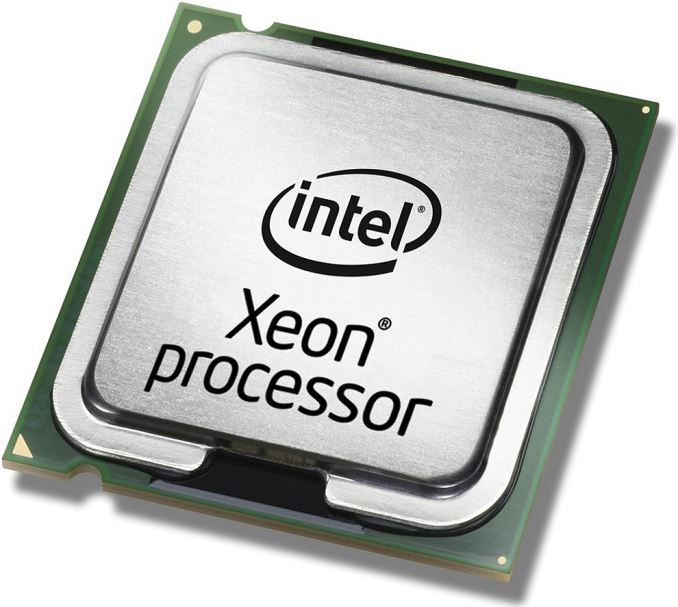
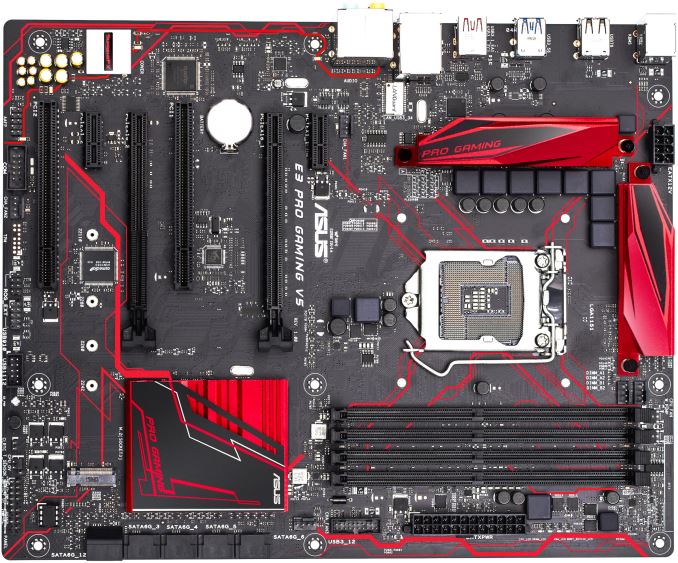

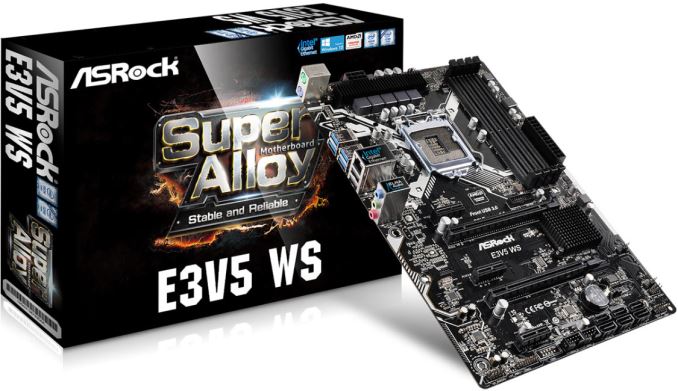
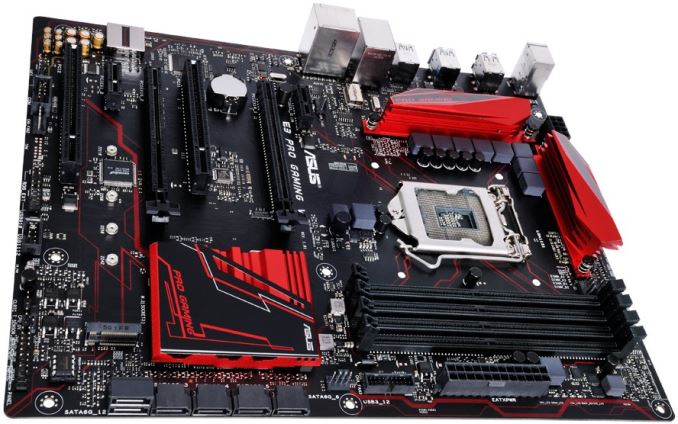








49 Comments
View All Comments
Michael Bay - Tuesday, December 29, 2015 - link
It`s just his paranoia.Ryan Smith - Tuesday, December 29, 2015 - link
"I don't know Anandtech's policy on native advertisements (if they exist, if they're disclosed, etc.)"If we were ever to run a sponsored post or other form of native advertising, it would be disclosed. That much is non-negotiable.
Reflex - Tuesday, December 29, 2015 - link
I don't know if I mentioned this before, but you guys have done a pretty good job toning down the ads lately. I complained about this in a news article a few months ago, and it seems to have improved since then. I appreciate it. It was overwhelming there for a little while for those of us who don't use adblock because we want to support our favorite sites.jordanclock - Tuesday, December 29, 2015 - link
I just read it as meaning that Intel and motherboard manufacturers have fewer CPUs to vet their chipsets with since consumer and enterprise don't need any sort of intercompatibility.alyarb - Tuesday, December 29, 2015 - link
Anton is a relatively new contributor to this site and he seems to fit the new strategy perfectly. I do not believe that AT has forgotten about "us," enthusiasts, developers, and engineering types. However we have certainly been outnumbered and displaced by a larger, more generalized and more pedestrian readership, and AT needs greater quantity over quality of content to keep pace and this will ultimately cost them some discriminating readers that they can afford to lose.The pipeline stories and full-width ads, while easy to ignore, are the necessary but greasy rudiments they need to lubricate this flim-flam machine so that they can afford to host all this crap and maybe put out 5-10 truly quality articles per year.
They need guys like Anton who really know the hardware and can both pump out content quickly and dumb it down for most readers. This is tech journalism's answer to the drive-thru window and Anandtech must work with the most common denominator of audiences in order to stay relevant.
Since the pipeline stories are essentially just paraphrased press releases and are certain to be reposted verbatim on every site, it would not kill the Anandtech writers to bring something unique, some familiarity or expertise to the topic, rather than demonstrating your distance from it and duplicating whatever comes from the Manufacturer's site. Tons of other sites have run this story already, so rather than solidify the mediocrity of this coverage by rewording the same crap, you could try to do something unique, or something speculative, to stand out among the others.
For instance, what exactly is the purpose of the second image in the article? Why is it needed? Just a massive model of a CPU with the Xeon logo you got from the intel site... for what? fun? You know as well as I do that real CPUs don't even look like that, so even if its just a dumb news story, why are you posting half-assed clip art on a top tech site? You can do way better, plenty of xbit articles prove that.
Why don't you go get a real CPU, photograph it and publish it to this article, and let us know when we can expect a proper analysis, overclocking and bench tests of a genuine Xeon v5? Do your thing man, passion for tech is why most of us are still here. We are certainly not here for the press releases.
For having nothing original to say, this post is way too long. It's almost like there should be a disclaimer over the pipeline menu that says something like "these aren't real stories, we just announce new products here in order to fund the site."
speely - Tuesday, December 29, 2015 - link
Anton Shilov got fired from KitGuru for letting his personal brand preferences drive his decision to alienate AMD users by claiming that anyone who purchases AMD products bases their decision on how cool the thing looks and not on how it performs.I'm highly disappointed to learn that AT gave him a microphone.
Ryan Smith - Tuesday, December 29, 2015 - link
"The pipeline stories and full-width ads, while easy to ignore, are the necessary but greasy rudiments they need to lubricate this flim-flam machine so that they can afford to host all this crap and maybe put out 5-10 truly quality articles per year."The fundamental purpose of the pipeline is to give us a suitable forum to write up short-form articles on things that we believe are newsworthy, but don't necessitate in-depth coverage. From our About page:
"AnandTech is primary a review and analysis website, however we also understand the need to report on smaller items that may not warrant our normal long form coverage. At the same time, these smaller news stories are deserving of the same editorial treatment as our longer articles. To service this need we have created a short form content section called Pipeline.
Pipeline's goal is to provide the same level and quality of AnandTech editorial, but for content that's better serviced by short form content (e.g. news releases, small announcements, etc…). The Pipeline team is in direct communication with the Reviews team (many of the team members have roles on both teams) and are given the same high level direction (e.g. no rumors, no sensationalism, etc…) as the rest of the AnandTech Editors.
I believe there's a need for both long and short form content, but you don't have to sacrifice quality to deliver both. We have no internal guidelines for how many Pipeline stories we post per day - we strive to post content of value, just as we do with our reviews."
I believe a Xeon gaming motherboard to be interesting and thus suitable to post in our Pipeline; we've never had anything like this before, and only have it now thanks to Intel's latest chipset changes. Whether we do a full review is still to be determined, but for the moment there's every reason to put together a short-form article pointing out what Asus and ASRock are up to. And the emphasis is on "short-form," just because an article is short doesn't mean it's being dumbed-down.
"For instance, what exactly is the purpose of the second image in the article? Why is it needed? Just a massive model of a CPU with the Xeon logo you got from the intel site... for what? fun? You know as well as I do that real CPUs don't even look like that, so even if its just a dumb news story, why are you posting half-assed clip art on a top tech site? You can do way better, plenty of xbit articles prove that."
That image is one of Intel's official images for the Xeon. Other than the text on top (which Intel has clearly added for branding purposes) that is what a Xeon looks like, and it was added to provide a bit more context to the story for anyone skimming through the article. It is entirely superfluous from the standpoint of the text, but we know that a fair number of readers here don't read every pipeline article word-for-word, so we do try to throw in some suitable images to help with skimming and to prevent the TD;DR effect.
alyarb - Tuesday, December 29, 2015 - link
I appreciate you taking a closer look. I just think massive stock photos or big logos or other graphics that do not support the content in the article will cheapen it.Another example, in the HAMR pipeline story, the last image with the hard drive, cheesy flame/mirror effect, and seagate logo? it's just... why, why this cheesy image, that doesn't support the content in any way?
Lord of the Bored - Thursday, December 31, 2015 - link
Because "This move is designed to let Intel screw their customers out of millions of dollars, just like multiplier locking and everything else" is more honest, draws angry letters from well-funded lawyers*, and loses them access to future Intel news more interesting than boring old press releases any idiot can download.*Dear Intel: Please don't sue me. I'm poor anyways, not worth your trouble.
crashtech - Tuesday, December 29, 2015 - link
It's not clear if any of these boards actually support BCLK overclocking. If they do, they are indeed an interesting alternative for power users and gamers.